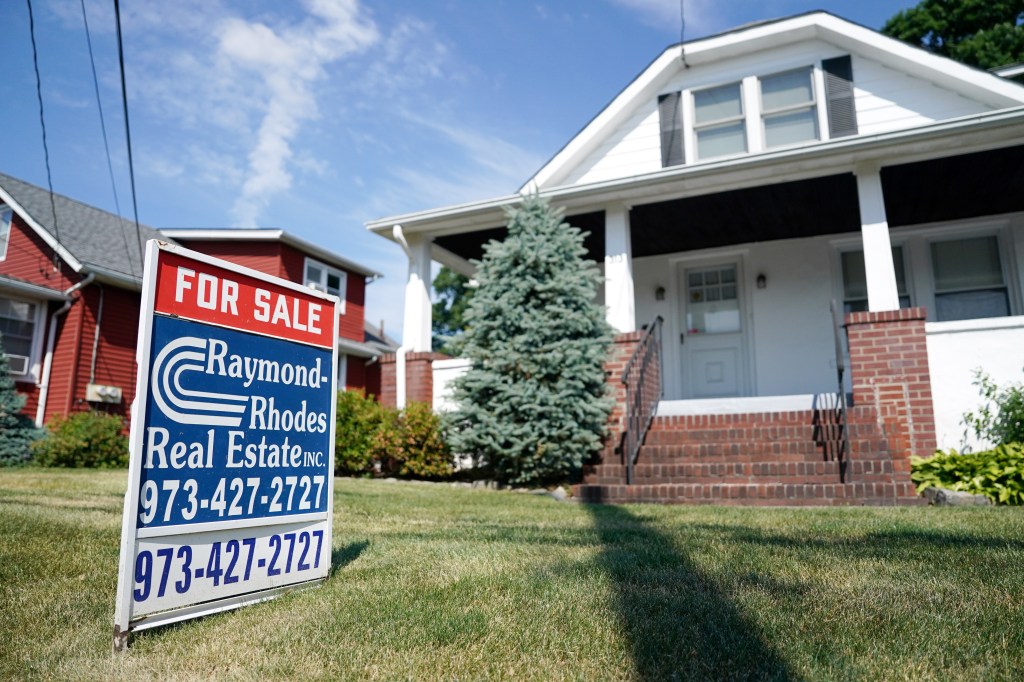Home sales drop for third straight month as prices hit record high
Sales of previously occupied US homes fell in May for the third straight month as rising mortgage rates and record-high prices discouraged many prospective homebuyers during what’s traditionally the housing market’s busiest period of the year.
Sales of previously occupied US homes fell 0.7% in May from the previous month to a seasonally adjusted annual rate of 4.11 million, the National Association of Realtors said Friday.
Existing home sales also fell 2.8% compared with May last year.
The latest sales still came in slightly higher than the 4.07 million pace economists were expecting, according to FactSet.
“I thought that we would actually see a recovery this spring —- we are not seeing it,” said Lawrence Yun, the NAR’s chief economist.
Despite the pullback in sales, home prices climbed compared with a year earlier for the 11th month in a row.
The national median sales price rose 5.8% from a year earlier to $419,300, an all-time high on records going back to 1999. It’s also up 51% from five years ago.
Home prices rose even as sales slowed and the supply of properties on the market hit its highest level in 4 years.
“It’s somewhat of a strange phenomena,” Yun said. “We had low home sales activity, prices are hitting record highs and homes look like they’re still getting multiple offers.”
The US housing market has been mired in a slump going back to 2022, when mortgage rates began to climb from pandemic-era lows.
Existing home sales sank to a nearly 30-year low last year as the average rate on a 30-year mortgage surged to a 23-year high of 7.79%, according to mortgage buyer Freddie Mac.
The average rate on a 30-year mortgage has mostly hovered around 7% this year as stronger-than-expected reports on the economy and inflation have forced the Federal Reserve to keep its short-term rate at the highest level in more than 20 years.
Federal Reserve officials said last week that inflation has fallen further toward their target level of 2% in recent months and signaled that they expect to cut their benchmark interest rate once this year.
The central bank had previously projected as many as three cuts in 2024, which raised expectations in the housing market for mortgage rates to have eased further by now.
“Maybe the Federal Reserve interest rate cut policy, which was projected to happen, but did not happen — it’s getting delayed and delayed and delayed —- maybe that’s causing the home sales recovery to be delayed,” Yun said.
The elevated mortgage rates are keeping many homeowners who bought or refinanced more than two years ago from selling now because they don’t want to give up their fixed-rate mortgages below 3% or 4% — a trend real estate experts refer to as the “lock-in” effect.
As of the end of last year, more than 50% of homes with a mortgage had a rate that was 4% or lower, and 87% had a rate at 6% or lower, according to Realtor.com.
Another factor that’s constrained the housing market is a tight supply of homes for sale, though that’s been easing this year, partly because homes are taking longer to sell.
All told, there were about 1.3 million unsold homes at the end of last month, an increase of 6.7% from April and up 18.5% from May last year, NAR said.
That translates to a 3.7-month supply at the current sales pace.
In a more balanced market between buyers and sellers there is a 4- to 5-month supply.
“Let’s wait to see if this leads to more home sales,” Yun said. “So far, that’s not the case, but at least the inventory is beginning to loosen up.”





